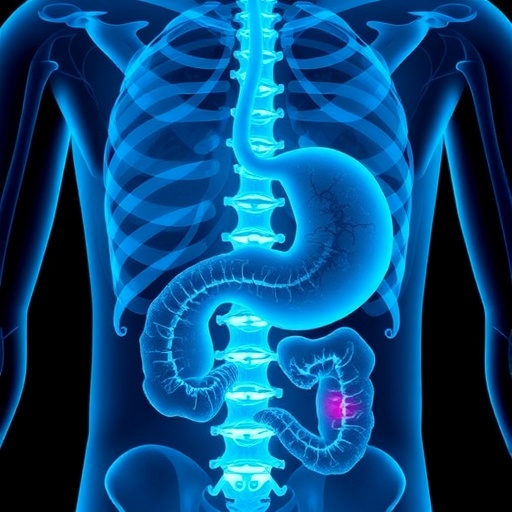Slower walking pace linked to a higher likelihood of death and hospital visits; researchers say gait speed should be used along with other vital signs to better tailor care
(WASHINGTON, June 5, 2019) — How slow–or fast–older individuals with blood cancers are able to walk four meters (about 13 feet) holds critical information about their overall health and strongly predicts survival and unplanned hospital visits regardless of age, cancer or treatment type, or other factors, according to a new study published today in Blood. The association was strongest in those with non-Hodgkin lymphoma.
In fact, data show that for every 0.1 meter per second decrease in walking speed, the risk of dying, unexpectedly going to the hospital, or ending up in the emergency room increased by 22 percent, 33 percent, and 34 percent, respectively.
“The slower someone walks, the higher their risk of problems,” said Jane A. Driver, MD, MPH, associate director of the Geriatric Research Education and Clinical Center at VA Boston Healthcare System, and co-director of the Dana Farber Older Adult Hematologic Malignancy Program and the study’s senior author.
Monitoring gait speed not only helps to recognize individuals who are frail and may fare worse, it also identifies people who are in much better shape than expected based on age alone. Researchers say these results support efforts to integrate gait speed as a routine part of medical assessments for older patients with blood cancer, and it should be measured over time to guide treatment plans.
“There is an unmet need for brief screening tests for frailty that can easily fit into clinic workflow and predict important clinical outcomes. This test can be done in less than a minute and takes no longer than measuring blood pressure or other vital signs,” said Driver. “Based on our findings, it is as good as other commonly used methods which take considerably more time and resources and may not be practical for many oncology clinics.”
This prospective study enrolled a total of 448 adults with hematologic cancers ages 75 years and older who had an initial consultation for cancer treatment at hematology clinics affiliated with Dana-Farber Cancer Institute in Boston between February 1, 2015, and October 31, 2017. Participants were 79.7 years old on average and each completed several screenings for cognition, frailty, gait, and grip strength. Gait speed was obtained using the National Institutes of Health 4-meter gait speed test. Patients were asked to walk at a normal pace for 4 meters and their speed was recorded in meters per second using a stopwatch.
The association between slower walking speed and poorer outcomes persisted even after adjusting for cancer type, whether the disease was aggressive or indolent, age, and other demographic factors, as well as traditional measures of frailty and functional status. Gait speed remained an independent predictor of death even after accounting for standard physician-reported performance status. In addition, among patients with very good or excellent physician-reported performance status, patients were stratified into three groups by gait speed – those at risk or frail, pre-frail, or robust. A subset of 314 patients were followed for an average of 13.8 months. Of these, nearly 20 percent had an unplanned hospital stay unrelated to elective or scheduled treatments and 16.8 percent visited the emergency department.
“Our study shows that performance status alone may not be good enough. Gait speed appears to be much better at differentiating patients who are at high risk,” explained Driver. “The standard of care is to stratify treatments based on patients’ performance status, and while this works well in younger people, these results show that in older people we need to do more.”
While walking might seem simple, it’s quite complex, as multiple bodily systems, including the musculoskeletal, cardiovascular, and nervous systems, must function properly together. Gait speed has been widely used as an assessment in rehabilitative and geriatric medicine. Driver said these results suggest gait speed should also be incorporated into predictive models to assess how older cancer patients will fare. Measuring gait speed doesn’t require special equipment, is reasonably efficient, and has value even for patients who use a cane or a walker, she added.
The authors also assessed grip strength in all patients although it strongly predicted survival, it did not predict hospitalization or emergency room use as well as gait speed.
Earlier studies have found that frailty is common among patients with blood cancers and has been linked to chemotherapy-related toxicity, poorer treatment responses, and even death. While these study results are limited to a single institution, Driver said they demonstrate real-world feasibility of using gait speed to gauge frailty and overall prognosis among patients with blood cancer.
###
Blood, the most cited peer-reviewed publication in the field of hematology, is available weekly in print and online. Blood is journal of the American Society of Hematology (ASH), the world’s largest professional society concerned with the causes and treatment of blood disorders.
ASH’s mission is to further the understanding, diagnosis, treatment, and prevention of disorders affecting blood, bone marrow, and the immunologic, hemostatic, and vascular systems by promoting research, clinical care, education, training, and advocacy in hematology.
blood® is a registered trademark of the American Society of Hematology.
Media Contact
Amanda Szabo
[email protected]




